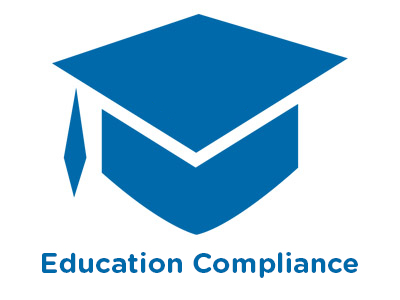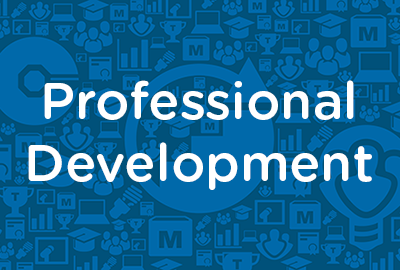 |
Correcting Performance Problems: Disciplining Employees |
1.67 |
Discipline is proactive, as opposed to punishment, which is reactive. Punishment provides a consequence to an action that is deemed unacceptable, whereas discipline is designed to exchange undesirable behavior for satisfactory behavior.
The purpose of disciplining an employee is twofold:
1. To correct or eliminate undesirable behavior, and
2. To provide training that improves or strengthens performance.
In this course you will learn to: keep a disciplinary perspective, determine the cause for disciplining an employee, and prepare for conducting a disciplinary meeting, maintain a positive rapport, avoid pitfalls during a disciplinary meeting with employees, and keep meetings productive, and monitor employee performance and conduct a follow-up meeting with the employee. |
 |
Construction Safety & Prevention Program: Disciplinary Policy Employer Responsibility |
0.50 |
Disciplinary Policy Employer Responsibility is part of a twelve-part construction safety and prevention program. This course covers how to implement proper disciplinary programs in the case of safety violations or insubordination. You will learn how to keep track of these programs and learn how to communicate these programs. |
 |
Building Foundations for Language and Literacy Development (CDA 8) |
2.00 |
Did you know infants are language-learning powerhouses? Their brains are primed to soak up any language. But to unlock their speaking potential, they need your voice! This session empowers you to discover playful ways to nurture language and literacy skills in infants and toddlers. Together, we'll assess current practices and identify opportunities to strengthen the foundation for a lifelong love of language and learning. |
 |
Development and Characteristics of Learners for Teachers |
1.00 |
Development and Characteristics of Learners will assist you in fostering a solid understanding of how children develop and the disability categories that may impact their learning. This course will also help you gain invaluable insight into ways you can support children and meet their needs. |
 |
Dementia and Oral Health |
1.00 |
Dementia is one of the main causes of disability among older adults. Alzheimer’s disease is the most common form of dementia. The oral health of patients with Alzheimer’s disease can be worse than that of those without dementia. Therefore, maintaining good oral health is an important and integral part of their general health. The purpose of this educational module is to provide an overview of oral health and the importance of oral care for patients with Alzheimer’s disease. |
 |
Power and Pride: The Origins of Pride Month |
1.00 |
Decades of oppression of the LGBTQ+ community, cultural shifts in the 1960s, and good troublemaking led to that fateful night at Stonewall. You’ll learn how the events on June 28 became a catalyst for change and a symbol for LGBTQ+ rights that evolved into today’s Pride festivals and marches. This course explores the key events and personalities in the United States that ultimately shaped a global movement. |
 |
Data Security Training |
1.00 |
Data hacks in higher education are the second-highest category of reported industry breaches, accounting for 17 percent of all reported hacks. Resolving data hacks is expensive, costing anywhere from hundreds of thousands to millions of dollars. Understanding how to maintain data security is key to preventing hacks and keeping sensitive data private. |
 |
Cyberbullying |
1.00 |
Cyberbullying is bullying that takes place over digital devices like cell phones, computers, and tablets. Cyberbullying can occur through SMS, text, and apps, or online in social media, forums, or gaming where people can view, participate in, or share content. Cyberbullying includes sending, posting, or sharing negative, harmful, false, or mean content about someone else. It can include sharing personal or private information about someone else, causing embarrassment or humiliation. Some cyberbullying crosses the line into unlawful or criminal behavior.
In this course, you will:
• Learn the definition of cyberbullying
• Discover tactics on preventing cyberbullying
• Discover tips on communicating with parents and teachers, and how to report instances of cyberbullying |
 |
Quality Management: Customer Orientation (Instructor Guide) |
0.75 |
Customer orientation is an organizational mindset in which meeting the needs of the customer becomes an organization’s focus. Customer orientation is an important aspect of quality management because it ensures customer satisfaction by integrating the customer’s needs into strategic planning, product development, and product delivery.
There are three components that comprise customer orientation: awareness of the market, communication of market intelligence to the entire organization, and initiatives to make use of the market intelligence.
This Instructor's Edition of this course includes notes and suggestions to assist you in presenting the material, whether in an in-person classroom setting or as an instructor-led online or distance-learning course. It also provides you with the answers to questions found in mid-lesson activities, as well as in the quiz that concludes the course. |
 |
Quality Management: Customer Orientation |
0.75 |
Customer orientation is an organizational mindset in which meeting the needs of the customer becomes an organization’s focus. Customer orientation is an important aspect of quality management because it ensures customer satisfaction by integrating the customer’s needs into strategic planning, product development, and product delivery.
There are three components that comprise customer orientation: awareness of the market, communication of market intelligence to the entire organization, and initiatives to make use of the market intelligence. |
 |
Cultural Competence |
0.33 |
Culture reflects belief systems, practices, and the products of beliefs and practices among groups of people. This Cultural Competence training course is designed for participants to engage, reflect, and apply the information provided. |
 |
Cultural Competence (Corrections) |
0.33 |
Culture reflects belief systems, practices, and the products of beliefs and practices among groups of people. This Cultural Competence training course is designed for participants to engage, reflect, and apply the information provided. |
 |
Cross-Cultural Business Communication: Workplace Culture |
1.00 |
Culture is a way of life established by a group of people and passed on to succeeding generations. People within a culture usually share common values, beliefs, and perspectives and have the same language and communication style. Although people within a culture must live in close proximity while the culture is being established, future generations frequently relocate to other countries or regions. This creates situations of cross-cultural exchanges.
As we become increasingly diverse, there is a growing demand for cross‑cultural communication in the workplace. Technology allows us to communicate with peers across the globe, as though they were sitting in our offices. Efficient and cost-effective travel makes it possible to communicate face-to-face with clients in other countries. In addition, companies seeking diverse and highly skilled employees find a conglomeration of cultures among them. As a result, employers are emphasizing cross-cultural communication in their own organizations to prepare employees to work with diverse co-workers and clients.
In this course you will learn to: discuss the value of culture and the significance of cross-cultural communication in the workplace, and describe the impact of cultural differences on communication, and avoid miscommunication and conflicts that arise due to these difference. |
 |
Cross-Cultural Business Communication: Workplace Culture (Instructor Guide) |
1.00 |
Culture is a way of life established by a group of people and passed on to succeeding generations. People within a culture usually share common values, beliefs, and perspectives and have the same language and communication style. Although people within a culture must live in close proximity while the culture is being established, future generations frequently relocate to other countries or regions. This creates situations of cross-cultural exchanges.
As we become increasingly diverse, there is a growing demand for cross‑cultural communication in the workplace. Technology allows us to communicate with peers across the globe, as though they were sitting in our offices. Efficient and cost-effective travel makes it possible to communicate face-to-face with clients in other countries. In addition, companies seeking diverse and highly skilled employees find a conglomeration of cultures among them. As a result, employers are emphasizing cross-cultural communication in their own organizations to prepare employees to work with diverse co-workers and clients.
In this course you will learn to: discuss the value of culture and the significance of cross-cultural communication in the workplace, and describe the impact of cultural differences on communication, and avoid miscommunication and conflicts that arise due to these difference.
This Instructor's Edition of this course includes notes and suggestions to assist you in presenting the material, whether in an in-person classroom setting, or as an instructor-led online or distance-learning course. It also provides you with the answers to questions found in mid-lesson activities, as well as in the quiz that concludes the course. |
 |
Cultural Competence for Paraprofessionals |
0.75 |
Culture and cultural elements are essential components of people's identities. Understanding the cultural elements as paraprofessionals allows for a greater appreciation for students and can improve relationships. Cultural elements may include race and ethnicity, gender, and socio-economic status. These elements of culture are not separate from the larger cultural context in which we live and work, especially as paraprofessionals. It is important to recognize that many culturally and linguistically diverse families have specific customs and traditions that may not necessarily be connected to a particular cultural group. By understanding cultural competence, paraprofessionals can provide responsive instruction and support to students from all backgrounds. |
 |
Evaluación e implementación de un entorno de cuidado infantil seguro (CDA 1 & 5) (Spanish) Assessing and Implementing a Safe Child Care Environment (CDA 1 & 5) |
2.00 |
Cuando las familias inscriben a su hijo en un programa de cuidado infantil, confían en que los profesionales que trabajan con su hijo lo mantendrán seguro. A medida que los bebés y niños pequeños curiosos se desarrollan, su deseo de explorar presenta desafíos de seguridad únicos. Este curso guía a los profesionales que trabajan con bebés y niños pequeños para evaluar los espacios de juego, las experiencias de los niños y las prácticas actuales para maximizar la seguridad de los niños.
When families enroll their child in a child care program, they trust that the professionals working with their child will keep him safe. As curious infants and toddlers develop, their desire to explore presents unique safety challenges. This course guides professionals who work with infants and toddlers to assess play spaces, children’s experiences, and current practices to maximize children’s safety. |
 |
Construction Safety & Prevention Program: CSIP Introduction |
0.25 |
CSIP Introduction is part of a twelve-part construction safety and prevention program. This course introduces construction safety standards and preventing injury on the job. This course will also cover the structure of CSIP programs and OSHA considerations and rules. |
 |
Business Problem Solving: Critical Thinking and Information Analysis |
1.34 |
Critical thinking is the ability to understand how others think as well as how your own thinking process works. It also includes the ability to objectively evaluate the evidence used to support beliefs or arguments that lead to conclusions. It is an important business and problem-solving skill. Critical thinking helps you to evaluate various methods of reasoning that can be used in problem solving.
In this course you will learn to: use reasoning and logic to think critically, define and use quantitative analysis techniques, and define and use qualitative analysis techniques. |
 |
Business Problem Solving: Critical Thinking and Information Analysis (Instructor Guide) |
1.34 |
Critical thinking is the ability to understand how others think as well as how your own thinking process works. It also includes the ability to objectively evaluate the evidence used to support beliefs or arguments that lead to conclusions. It is an important business and problem-solving skill. Critical thinking helps you to evaluate various methods of reasoning that can be used in problem solving.
In this course you will learn to: use reasoning and logic to think critically, define and use quantitative analysis techniques, and define and use qualitative analysis techniques.
This Instructor's Edition of this course includes notes and suggestions to assist you in presenting the material, whether in an in-person classroom setting or as an instructor-led online or distance-learning course. It also provides you with the answers to questions found in mid-lesson activities, as well as in the quiz that concludes the course. |
 |
Critical Thinking and Decision-Making |
1.00 |
Critical thinking is an act in which you question, analyze, interpret, evaluate and make a judgment about what you read, hear, say, or write. Critical thinking helps you make better decisions on a daily basis. Learn strategies for solving everyday problems and making thoughtful, well-informed decisions. |
 |
Creativity and Innovation: Fostering A Creative Environment |
1.00 |
Creativity is the ability to look at a situation from every possible angle and determine potential ideas, solutions, or outcomes. Employees with this ability add value to an organization by increasing its efficiency and productivity. This is why board members, stockholders, managers, and other employees want to recruit and retain creative individuals. Everyone in an organization benefits from the recruitment of creative people.
When a candidate begins to search for a job or becomes aware of available positions, the candidate will form an opinion about your company based on promotional material, media articles, stories, and word-of-mouth. Creative people look for flexibility. Although managers might hire creative people, some managers still tend to stifle employees’ creativity with excessive rules and directions. Creative candidates must believe that they will have the flexibility to be innovative, or they will look elsewhere for employment.
In this course you will learn to: recruit and retain creative individuals, and maintain a creative environment. |
 |
Creativity and Innovation: Fostering A Creative Environment (Instructor Guide) |
1.00 |
Creativity is the ability to look at a situation from every possible angle and determine potential ideas, solutions, or outcomes. Employees with this ability add value to an organization by increasing its efficiency and productivity. This is why board members, stockholders, managers, and other employees want to recruit and retain creative individuals. Everyone in an organization benefits from the recruitment of creative people.
When a candidate begins to search for a job or becomes aware of available positions, the candidate will form an opinion about your company based on promotional material, media articles, stories, and word-of-mouth. Creative people look for flexibility. Although managers might hire creative people, some managers still tend to stifle employees’ creativity with excessive rules and directions. Creative candidates must believe that they will have the flexibility to be innovative, or they will look elsewhere for employment.
In this course you will learn to: recruit and retain creative individuals, and maintain a creative environment.
This Instructor's Edition of this course includes notes and suggestions to assist you in presenting the material, whether in an in-person classroom setting, or as an instructor-led online or distance-learning course. It also provides you with the answers to questions found in mid-lesson activities, as well as in the quiz that concludes the course. |
 |
Creativity and Innovation: Creative Thinking Basics (Instructor Guide) |
1.34 |
Creativity is the ability to imagine new concepts or combine existing ideas in new and different ways. An old idea that was not applicable in the past might become practical if the factors that made it irrelevant have changed. These changes could be in the details of the idea, or in the situation in which it is to be applied.
Creativity is a key factor in personal development. There are certain traits that are evident in creative thinkers. To be creative, you need to differentiate between the traits that enhance your creativity, and those that inhibit it.
In this course you will: prepare yourself mentally and physically to be creative, use your experiences, innocence, intuition, and sense of adventure to increase your creativity.
This Instructor's Edition of this course includes notes and suggestions to assist you in presenting the material, whether in an in-person classroom setting, or as an instructor-led online or distance-learning course. It also provides you with the answers to questions found in mid-lesson activities, as well as in the quiz that concludes the course. |
 |
Creativity and Innovation: Creative Thinking Basics |
1.34 |
Creativity is the ability to imagine new concepts or combine existing ideas in new and different ways. An old idea that was not applicable in the past might become practical if the factors that made it irrelevant have changed. These changes could be in the details of the idea, or in the situation in which it is to be applied.
Creativity is a key factor in personal development. There are certain traits that are evident in creative thinkers. To be creative, you need to differentiate between the traits that enhance your creativity, and those that inhibit it.
In this course you will: prepare yourself mentally and physically to be creative, use your experiences, innocence, intuition, and sense of adventure to increase your creativity. |
 |
Creativity and Innovation: Personal Creativity |
1.34 |
Creativity is often considered a talent that some people have. Actually, creativity's a skill that everyone can nurture through exercise and practice. You can prepare yourself both mentally and physically to be creative.
In this course you will learn to: prepare yourself mentally and physically to be creative, and use your experiences, innocence, intuition, and sense of adventure to increase your creativity. |


























